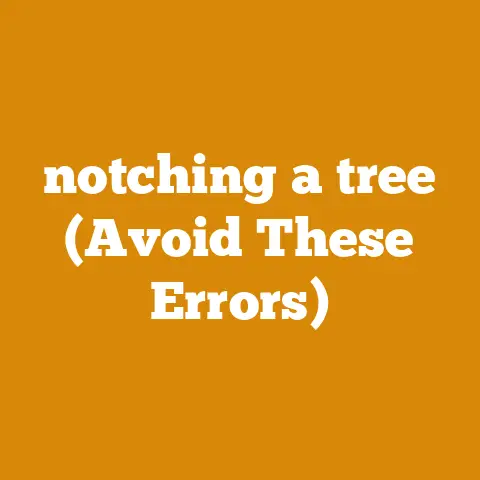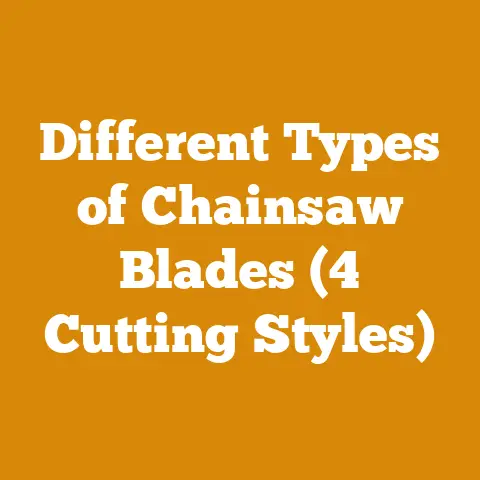ear defenders best (Protect Your Hearing)
Have you noticed how much louder the world has gotten lately? Whether it’s the noisy city streets, loud concerts, or even our beloved chainsaws roaring in the woods, our ears are constantly under attack. Ever thought about how you protect your hearing while working with a chainsaw? Let’s dive deeper into ear defenders, a crucial piece of gear for anyone who values their hearing.
Why Ear Defenders Matter
I remember the first time I heard the deafening roar of a chainsaw. It was exhilarating, sure, but it was also a wake-up call about protecting my hearing. Sound levels from chainsaws can reach up to 120 decibels, which is similar to standing near a jet engine! Without proper protection, prolonged exposure can lead to permanent hearing loss. Scary, right?
Understanding Noise-Induced Hearing Loss
Noise-induced hearing loss (NIHL) is more common than you might think. It sneaks up on you and can be permanent. The tiny hair cells in our inner ear, responsible for transmitting sound signals to the brain, are fragile. Once damaged, they don’t regenerate. It’s like having a one-way ticket to the land of silence.
How Ear Defenders Work
Ear defenders are designed to reduce the intensity of sound that reaches your ears. They use materials that block sound waves and create a seal around your ears. The effectiveness is measured by the Noise Reduction Rating (NRR), which tells you how much noise the defenders can block.
Choosing the Right Ear Defenders
You might be wondering, “What should I look for in ear defenders?” Here’s what I’ve learned through my years of experience:
Noise Reduction Rating (NRR)
- Look for a high NRR: The higher the rating, the better the protection. For chainsaw work, aim for an NRR of at least 25-30 dB.
- Understand the limits: Remember, no ear defender can block all noise. They reduce it to safer levels.
Comfort and Fit
- Try before you buy: Just like a good pair of boots, ear defenders need to fit well. They should sit snugly without pinching.
- Consider adjustable features: Some models offer adjustable headbands or ear cups for a personalized fit.
Durability and Materials
- Check the build quality: Look for sturdy materials that can withstand rough use.
- Water and sweat resistance: If you work outdoors a lot, this feature is a lifesaver.
My Personal Journey with Ear Defenders
When I first started as a lumberjack, I didn’t pay much attention to ear protection. Big mistake! After a few years, I noticed ringing in my ears after long days. That’s when I got serious about finding the right ear defenders.
I tried several brands and models before finding one that was comfortable and effective. What a difference it made! No more ringing, and I could focus better on the task at hand.
Step-by-Step: Using Ear Defenders Properly
- Inspect Before Use
- Check for cracks or damage.
- Ensure the ear cups are clean and the padding is intact.
- Properly Position the Ear Defenders
- Place the headband over the top of your head.
- Adjust until the ear cups fully cover your ears.
- Check for a Good Seal
- Press gently on the ear cups to ensure a snug fit.
- Adjust if you feel any gaps where noise could leak in.
Safety Tips & Warnings
Avoid Modifications
Never modify your ear defenders. Altering them can reduce their effectiveness and void warranties.
Regular Maintenance
Keep them clean and store them in a dry place. Replace worn-out parts as needed to maintain efficiency.
Common Questions and Concerns
What if I wear glasses?
Look for ear defenders with thin, comfortable padding that accommodates eyewear. You might need to adjust them a bit more to ensure a good seal.
Can I use earbuds or headphones instead?
While noise-canceling headphones or earbuds can help reduce noise, they typically don’t offer the same level of protection as dedicated ear defenders designed for high-noise environments like chainsaw work.
Troubleshooting Tips
- Feeling Pressure or Discomfort?
Re-adjust the headband and ear cups. Comfort is key to consistent use. - Noticing Decreased Effectiveness?
Inspect for wear and tear. Check if the cushions have become hard or brittle.
Advanced Features in Modern Ear Defenders
Today’s ear defenders come with some pretty nifty features:
Electronic Noise-Cancelling Technology
Some models use electronic circuits to cancel out certain frequencies. They’re perfect for environments where you still need to hear some background sounds while blocking out harmful noise.
Built-in Communication Systems
For team-based work environments, some ear defenders come with built-in communication systems. This allows you to stay connected with your team without removing your protection.
Bluetooth Connectivity
Love listening to music while you work? Some ear defenders offer Bluetooth connectivity so you can jam out safely.
Important Reminders
Protecting your hearing isn’t just about comfort—it’s about preserving your ability to enjoy life’s sounds for years to come. Always prioritize good quality ear defenders when you’re out in the field.
Next Steps
Now that you’re equipped with knowledge about choosing and using ear defenders, it’s time to put it into practice. Head to your local supplier or check online reviews to find a pair that suits your needs.
FAQ Section
Q1: How often should I replace my ear defenders?
A1: Replace them every 6 months to a year, depending on wear and tear. Regular inspection will give you a better idea of their condition.
Q2: Can I still hear conversations while wearing ear defenders?
A2: Some models allow for speech frequencies to pass through while blocking harmful noise levels. Look for this feature if communication is important.
Q3: Are there electronic options available?
A3: Yes, electronic ear defenders amplify low-level sounds while blocking harmful noise. They’re great for environments where situational awareness is crucial.
By now, you should have a clear understanding of why ear defenders are essential and how to choose the right ones for your needs. Keep those ears safe out there!






